



|

|

|
|
Bay Laurel, (Laurus nobilis, Lauraceae)
|
|
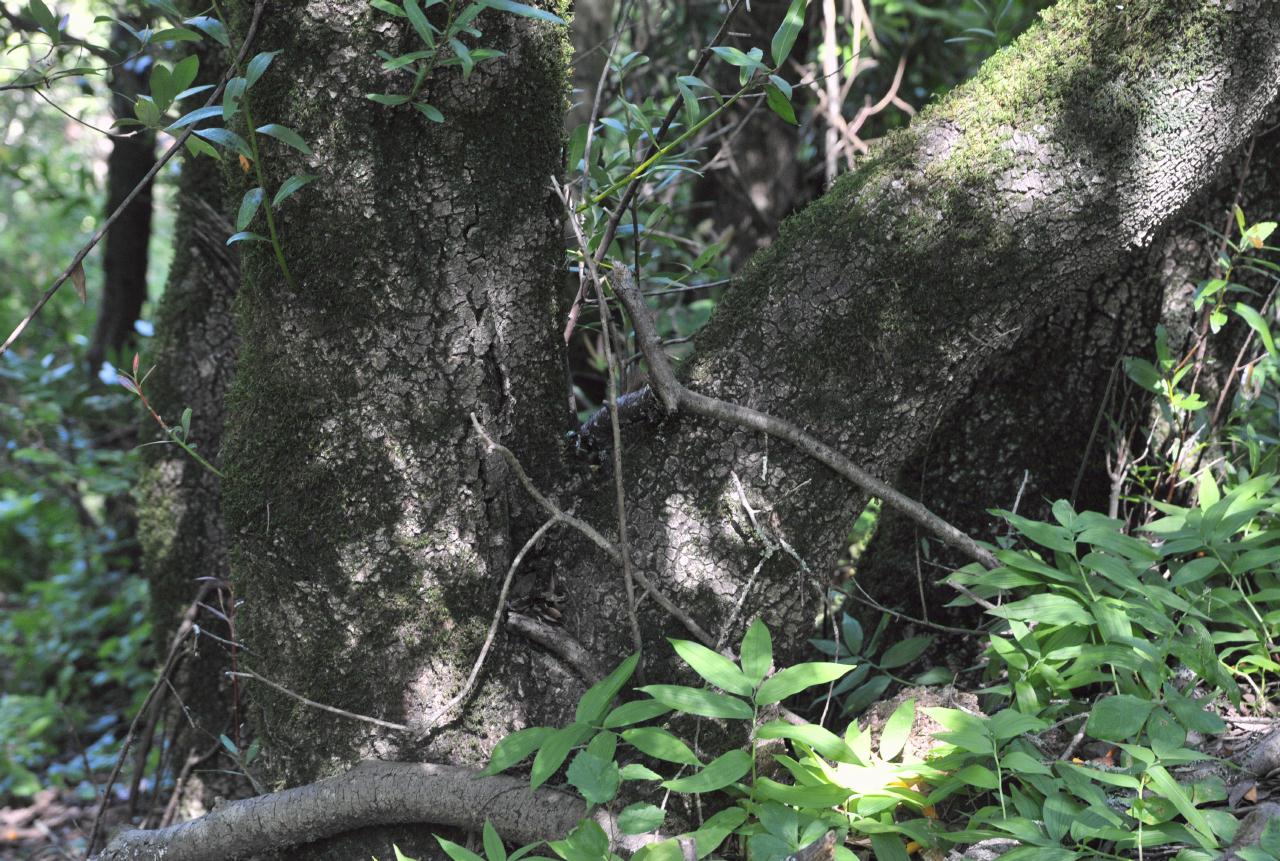 The bay trees successfully shade out all competition. Here near its thick trunk hardly any other plants can grow.
Bay Laurel (Laurus nobilis, Lauraceae) • Self-Guided Tour marker #5 • Huckleberry Botanic Regional Preserve • Tilden Park, Oakland, California • (Photo posted Wednesday 3 November 2010) • (Photo taken 14:31:10 Saturday 12 June 2010) • © 2010 Bryan Costales 
 #143110_6238BCX #143110_6238BCX
Add a comment or report a mistake
|
|
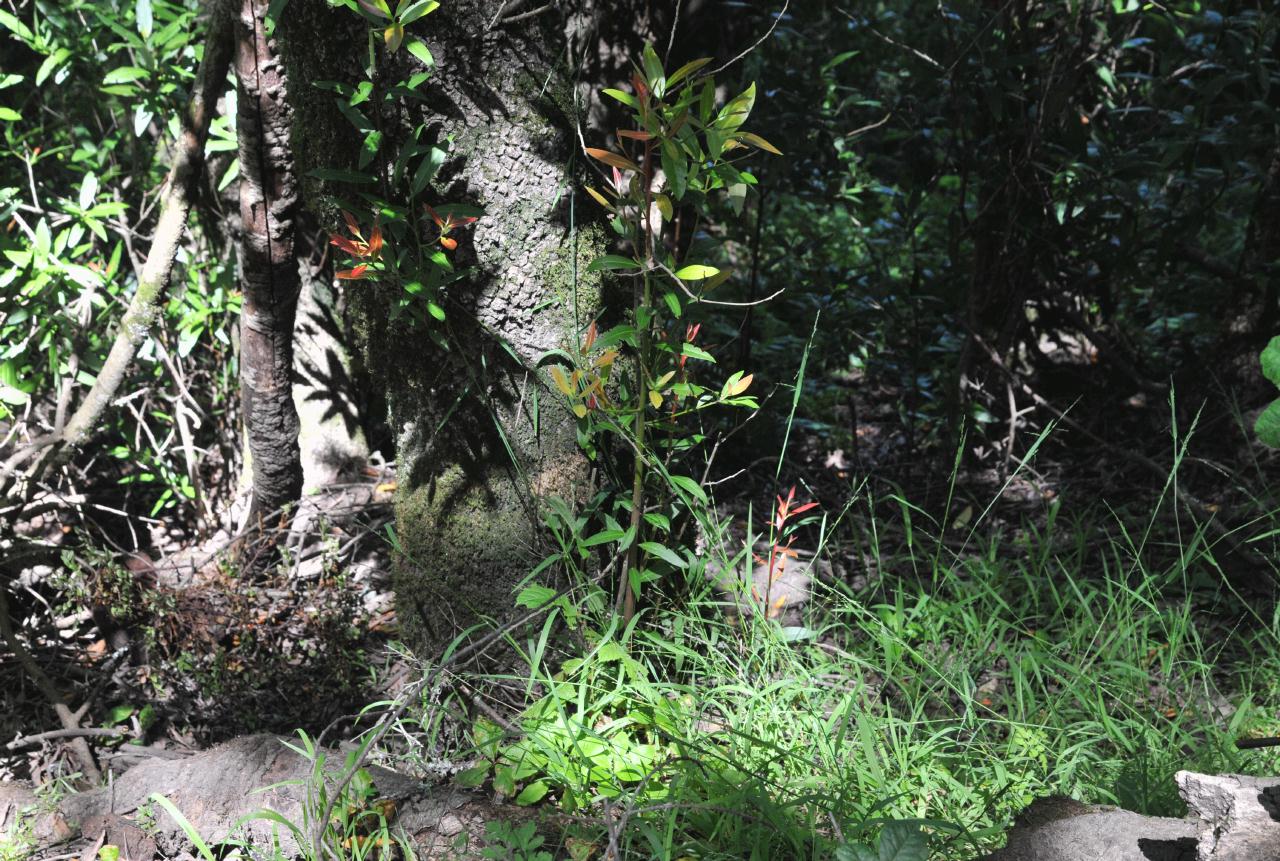 This bay laurel grew near the path so light allowed other plants to grow. Notice how dark the grove of bay laurels appeared behind it.
Bay Laurel (Laurus nobilis, Lauraceae) • Self-Guided Tour marker #5 • Huckleberry Botanic Regional Preserve • Tilden Park, Oakland, California • (Photo posted Wednesday 3 November 2010) • (Photo taken 14:31:20 Saturday 12 June 2010) • © 2010 Bryan Costales 
 #143120_6241BCX #143120_6241BCX
Add a comment or report a mistake
|
|
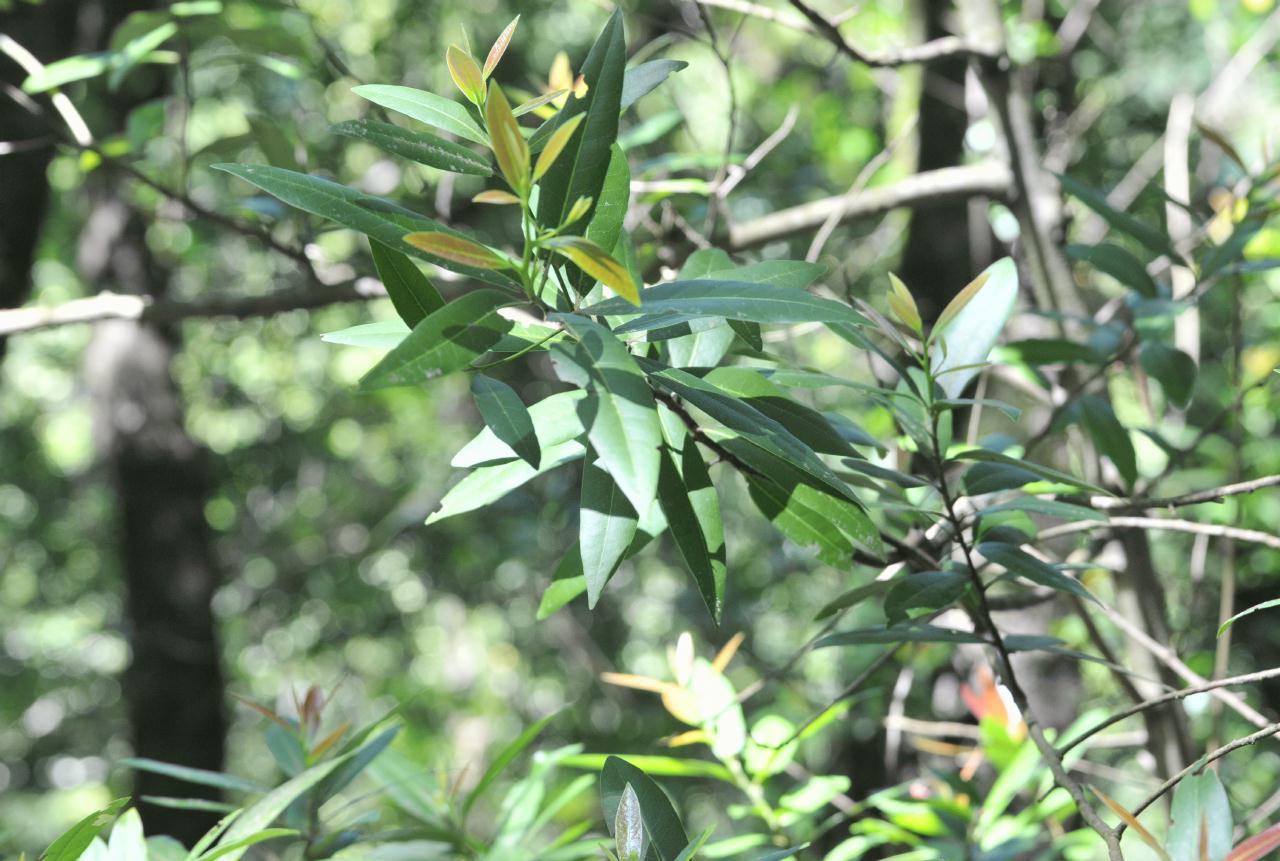 The leaves of the bay laurel are typically are 2 to 4 inches (6 to 12 cm) long and 0.5 to 1.5 inches (2 to 4 cm) broad. The edges of the leaves begin smooth, but serrate and wrinkle as they mature.
Bay Laurel (Laurus nobilis, Lauraceae) • Self-Guided Tour marker #5 • Huckleberry Botanic Regional Preserve • Tilden Park, Oakland, California • (Photo posted Wednesday 3 November 2010) • (Photo taken 14:31:38 Saturday 12 June 2010) • © 2010 Bryan Costales 
 #143138_6242BCX #143138_6242BCX
Add a comment or report a mistake
|
|
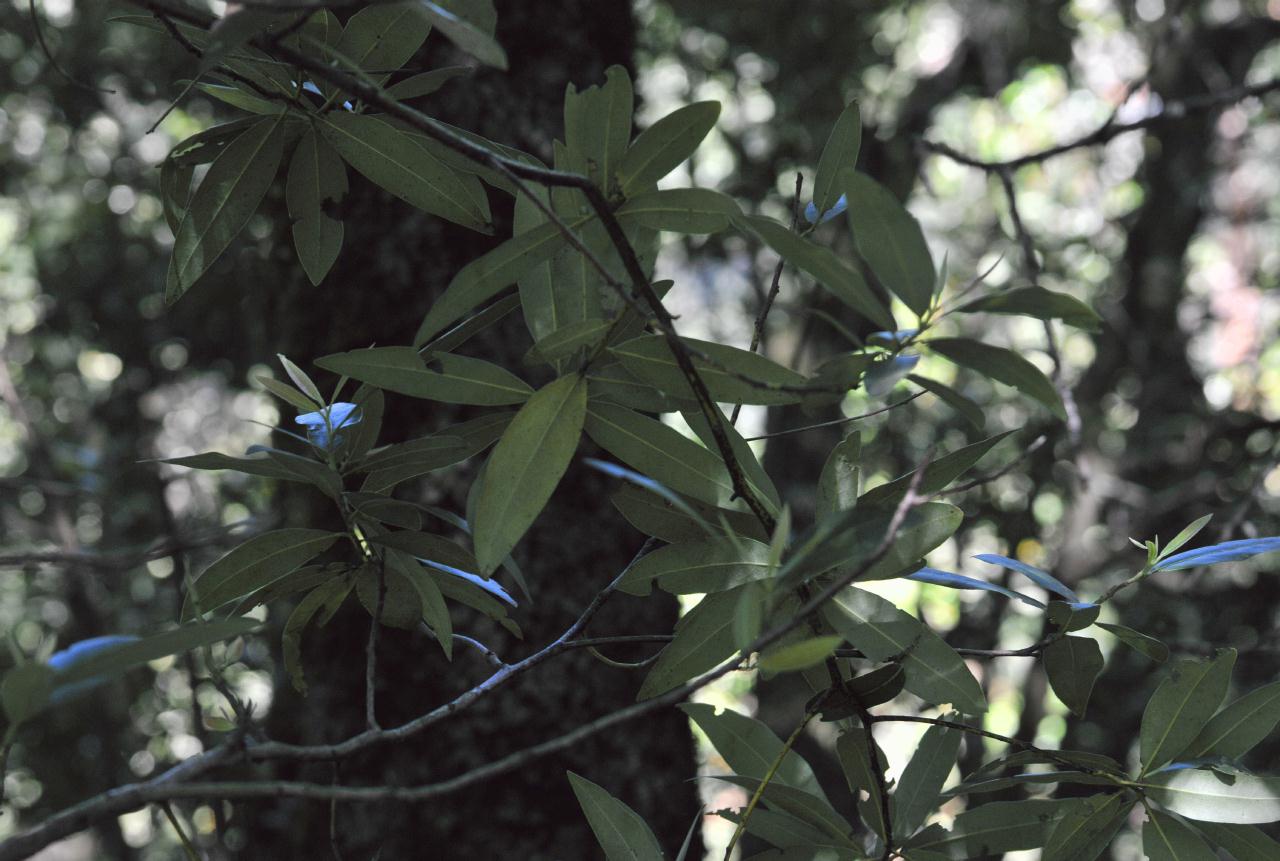 Because the bay laurel grows in tight groves, the leaves of one tree will intermingle with the leaves of a neighboring tree.
Bay Laurel (Laurus nobilis, Lauraceae) • Self-Guided Tour marker #5 • Huckleberry Botanic Regional Preserve • Tilden Park, Oakland, California • (Photo posted Wednesday 3 November 2010) • (Photo taken 14:31:44 Saturday 12 June 2010) • © 2010 Bryan Costales 
 #143144_6243BCX #143144_6243BCX
Add a comment or report a mistake
|
|
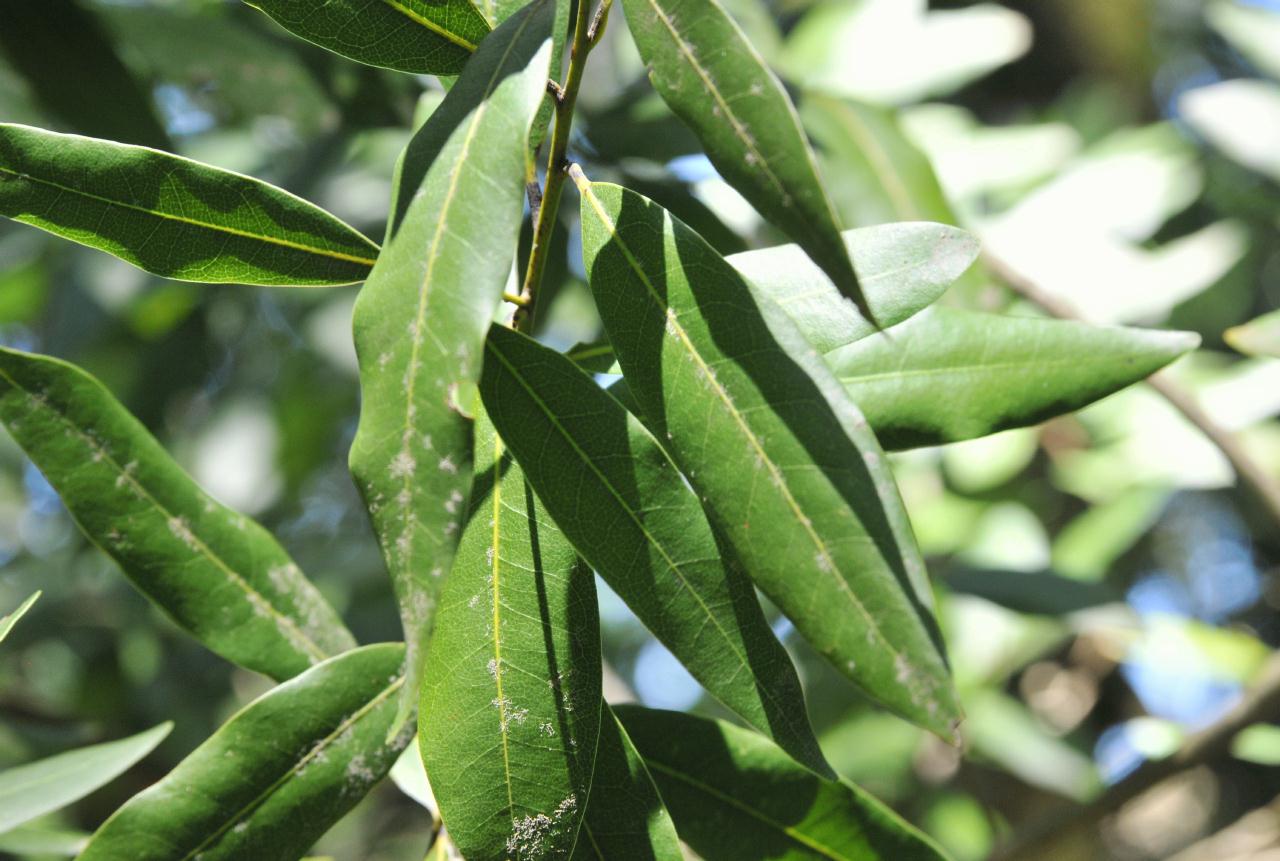 Bay Laurel is the source of the bay leaves, which are used for their flavor in cooking. The spicy aromatic leaves can be used to season soups and stews. But note that the wild leaves are four to five times as potent than commercial sources.
Bay Laurel (Laurus nobilis, Lauraceae) • Self-Guided Tour marker #5 • Huckleberry Botanic Regional Preserve • Tilden Park, Oakland, California • (Photo posted Wednesday 3 November 2010) • (Photo taken 14:32:22 Saturday 12 June 2010) • © 2010 Bryan Costales 
 #143222_6254BCX #143222_6254BCX
Add a comment or report a mistake
|
|
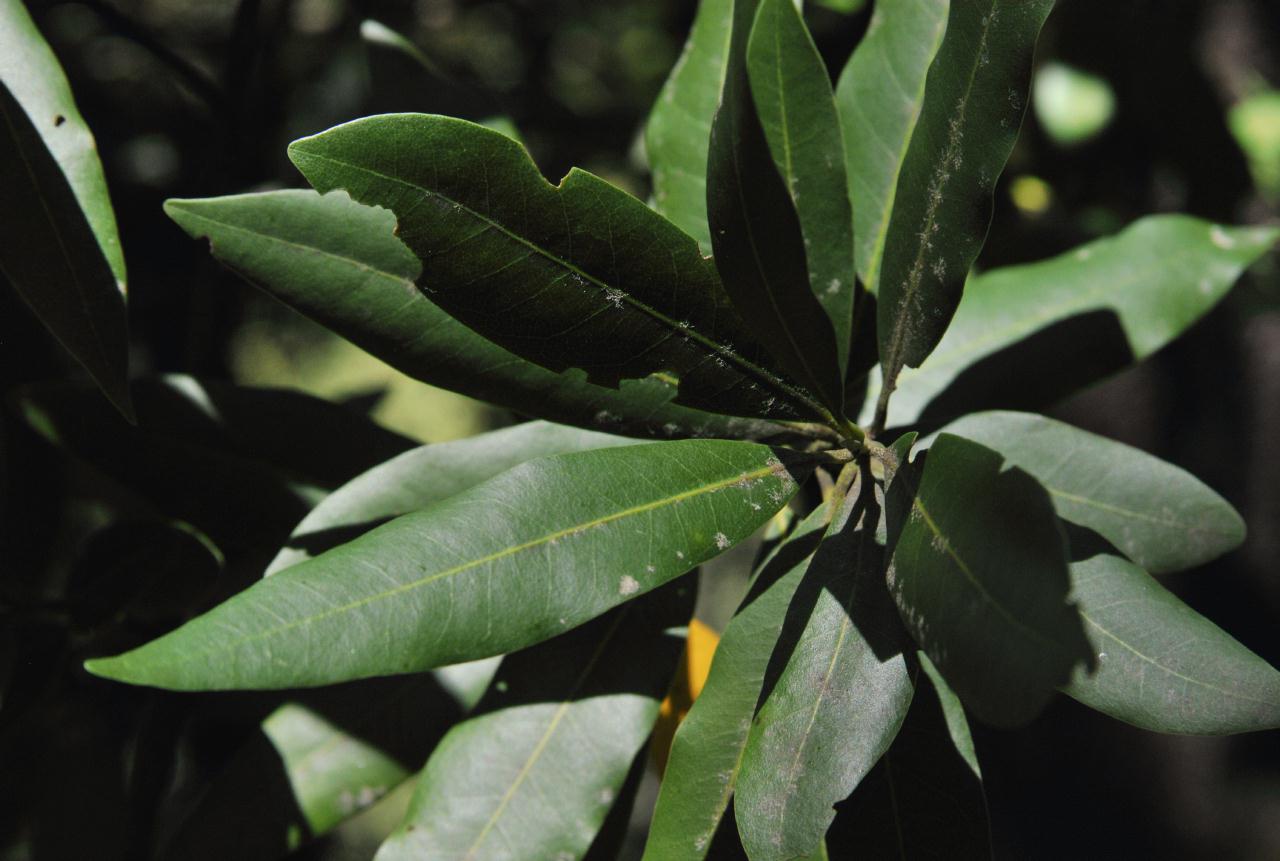
The laurel wreath
Bay Laurel (Laurus nobilis, Lauraceae) • Self-Guided Tour marker #5 • Huckleberry Botanic Regional Preserve • Tilden Park, Oakland, California • (Photo posted Wednesday 3 November 2010) • (Photo taken 14:32:26 Saturday 12 June 2010) • © 2010 Bryan Costales 
 #143226_6246BCX #143226_6246BCX
Add a comment or report a mistake
|
|
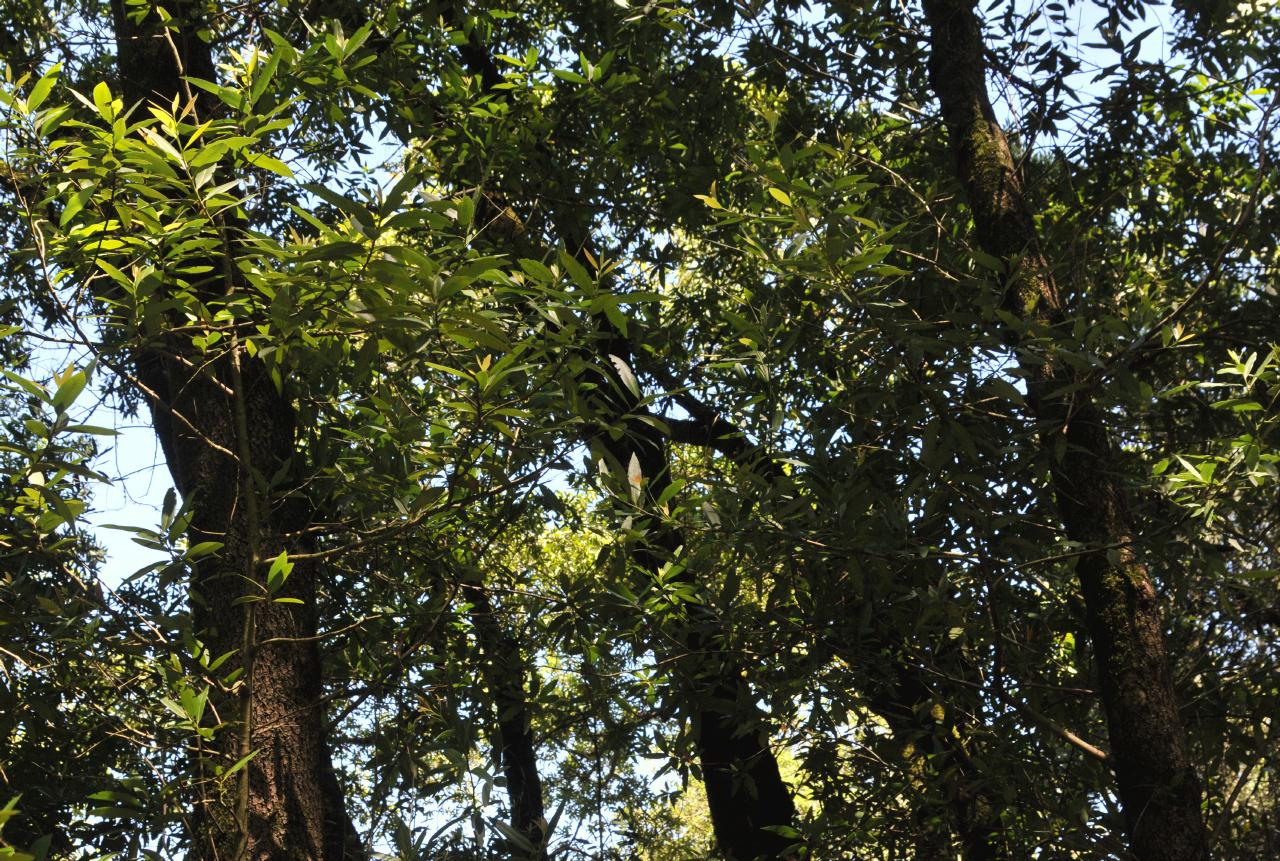 Bay laurel trees grow in tight groves and create so much shade they can drive out other grown covering plants.
Bay Laurel (Laurus nobilis, Lauraceae) • Self-Guided Tour marker #5 • Huckleberry Botanic Regional Preserve • Tilden Park, Oakland, California • (Photo posted Wednesday 3 November 2010) • (Photo taken 14:32:58 Saturday 12 June 2010) • © 2010 Bryan Costales 
 #143258_6247BCX #143258_6247BCX
Add a comment or report a mistake
|
|
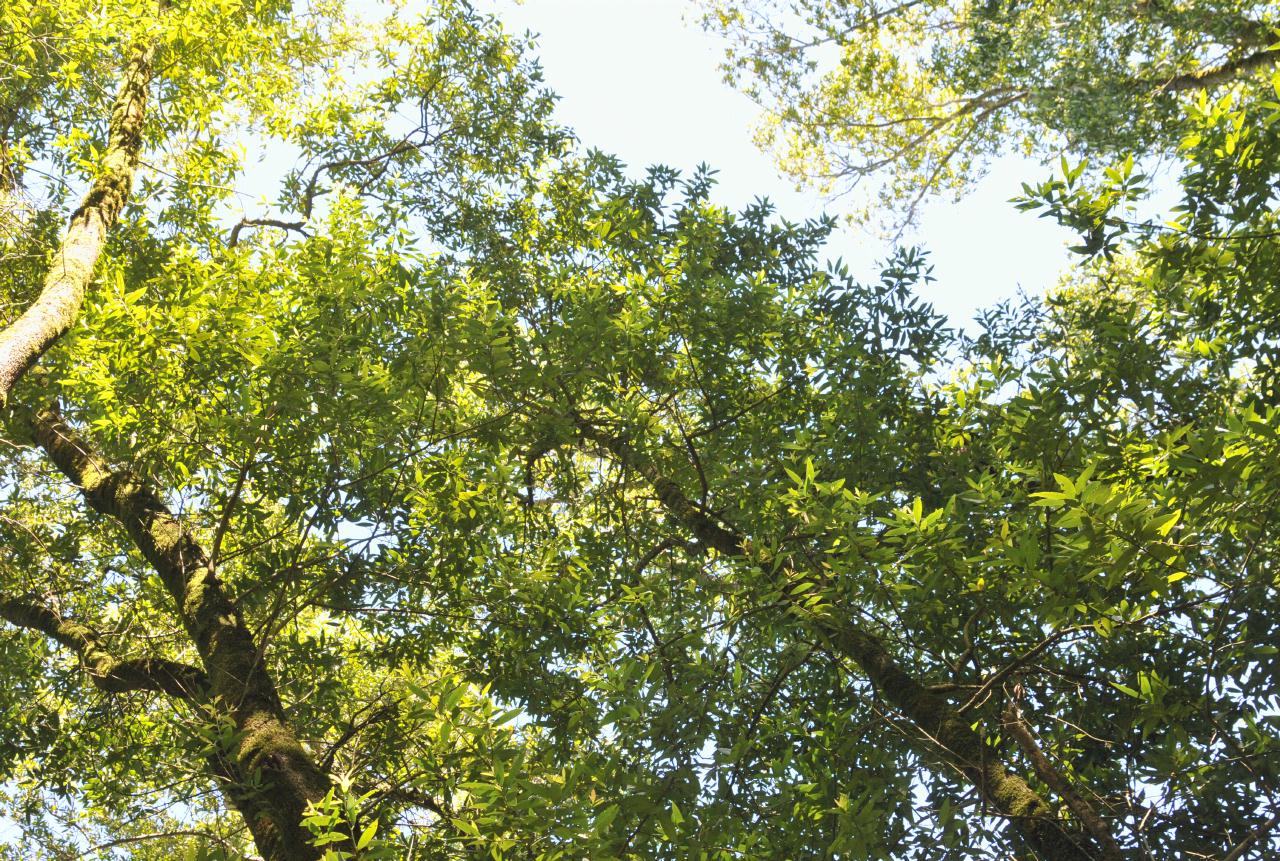 The bay laurel can grow to heights of 30 to 60 feet (10 to 18 meters). They are native to the Mediterranean region, but easily grow anywhere with a similar climate, such as in the California Bay Area.
Bay Laurel (Laurus nobilis, Lauraceae) • Self-Guided Tour marker #5 • Huckleberry Botanic Regional Preserve • Tilden Park, Oakland, California • (Photo posted Wednesday 3 November 2010) • (Photo taken 14:33:00 Saturday 12 June 2010) • © 2010 Bryan Costales 
 #143300_6248BCX #143300_6248BCX
Add a comment or report a mistake
|
|
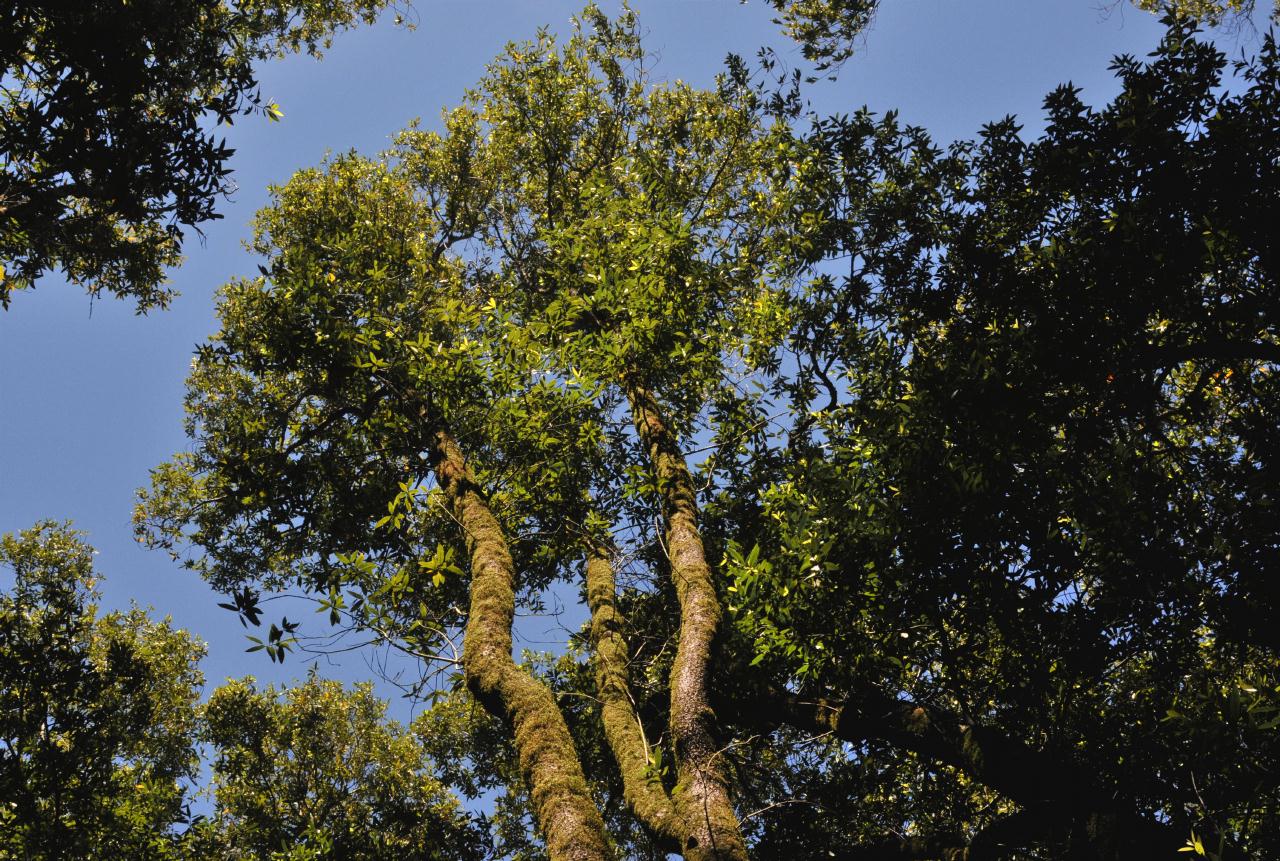 This individual bay laurel tree had three trunks growing from a single trunk at ground level.
Bay Laurel (Laurus nobilis, Lauraceae) • Self-Guided Tour marker #5 • Huckleberry Botanic Regional Preserve • Tilden Park, Oakland, California • (Photo posted Wednesday 3 November 2010) • (Photo taken 14:33:02 Saturday 12 June 2010) • © 2010 Bryan Costales 
 #143302_6249BCX #143302_6249BCX
Add a comment or report a mistake
|
|
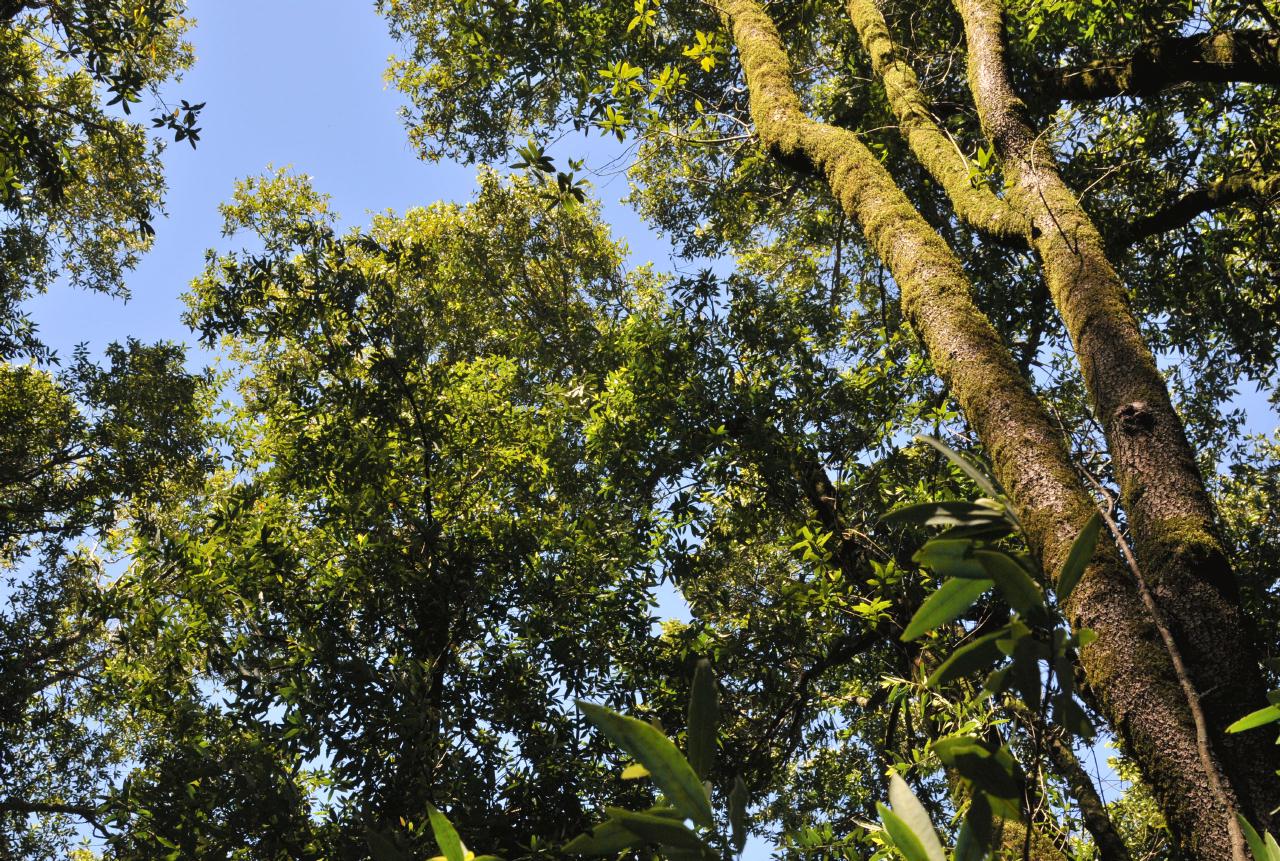 Moss grew on this particular grove of bay laurel trees. The moss coverage was most severe near the tops of the trees.
Bay Laurel (Laurus nobilis, Lauraceae) • Self-Guided Tour marker #5 • Huckleberry Botanic Regional Preserve • Tilden Park, Oakland, California • (Photo posted Wednesday 3 November 2010) • (Photo taken 14:33:04 Saturday 12 June 2010) • © 2010 Bryan Costales 
 #143304_6250BCX #143304_6250BCX
Add a comment or report a mistake
|
|
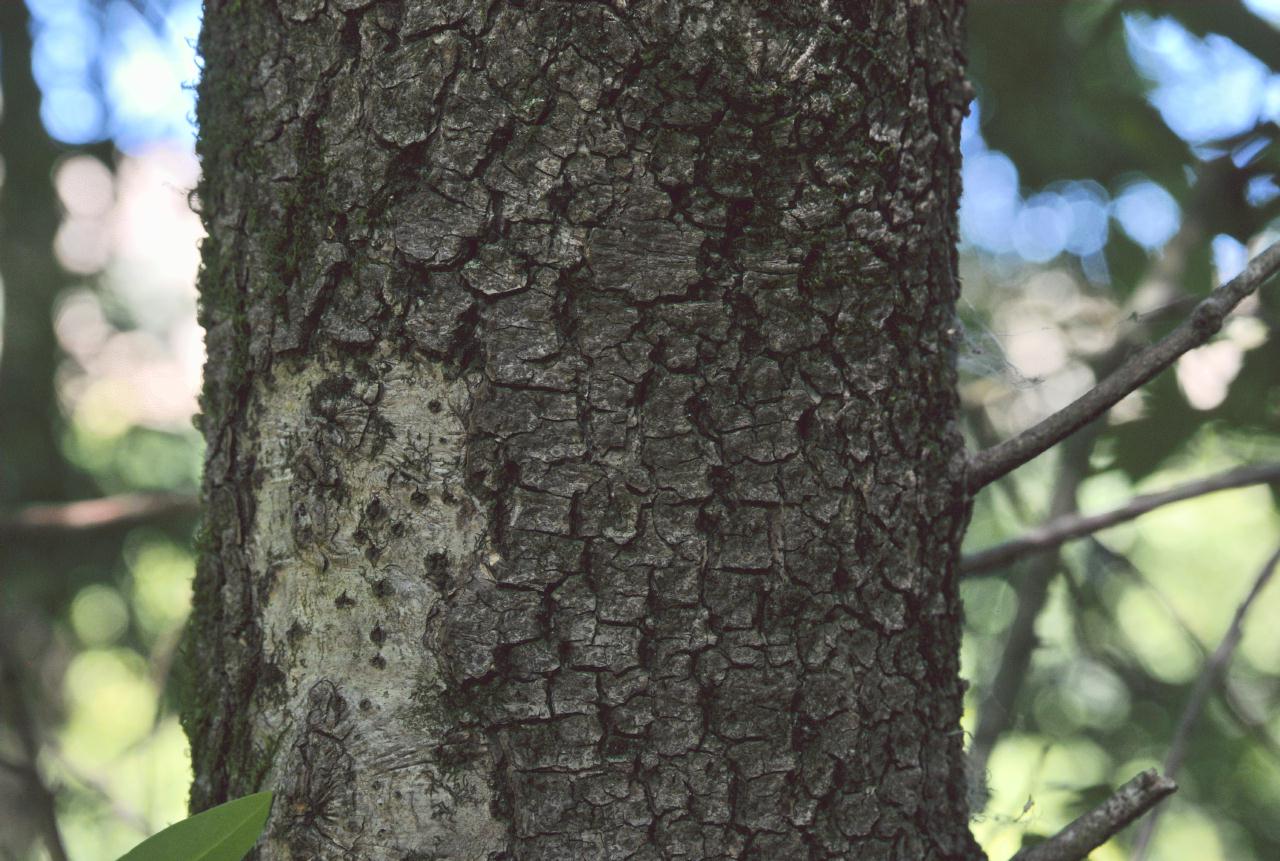 The trunk of the bay laurel tree was roughly textured. Bay laurel trees had few horizontal branches so did not appear easy to climb.
Bay Laurel (Laurus nobilis, Lauraceae) • Self-Guided Tour marker #5 • Huckleberry Botanic Regional Preserve • Tilden Park, Oakland, California • (Photo posted Wednesday 3 November 2010) • (Photo taken 14:33:26 Saturday 12 June 2010) • © 2010 Bryan Costales 
 #143326_6252BCX #143326_6252BCX
Add a comment or report a mistake
|
 |
| home • contact • topic guide • top 25 • photos • video • writing • blogs • upload • terms • privacy |